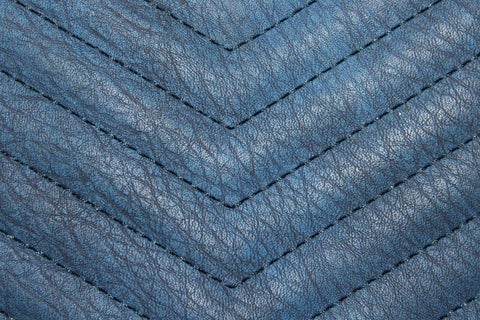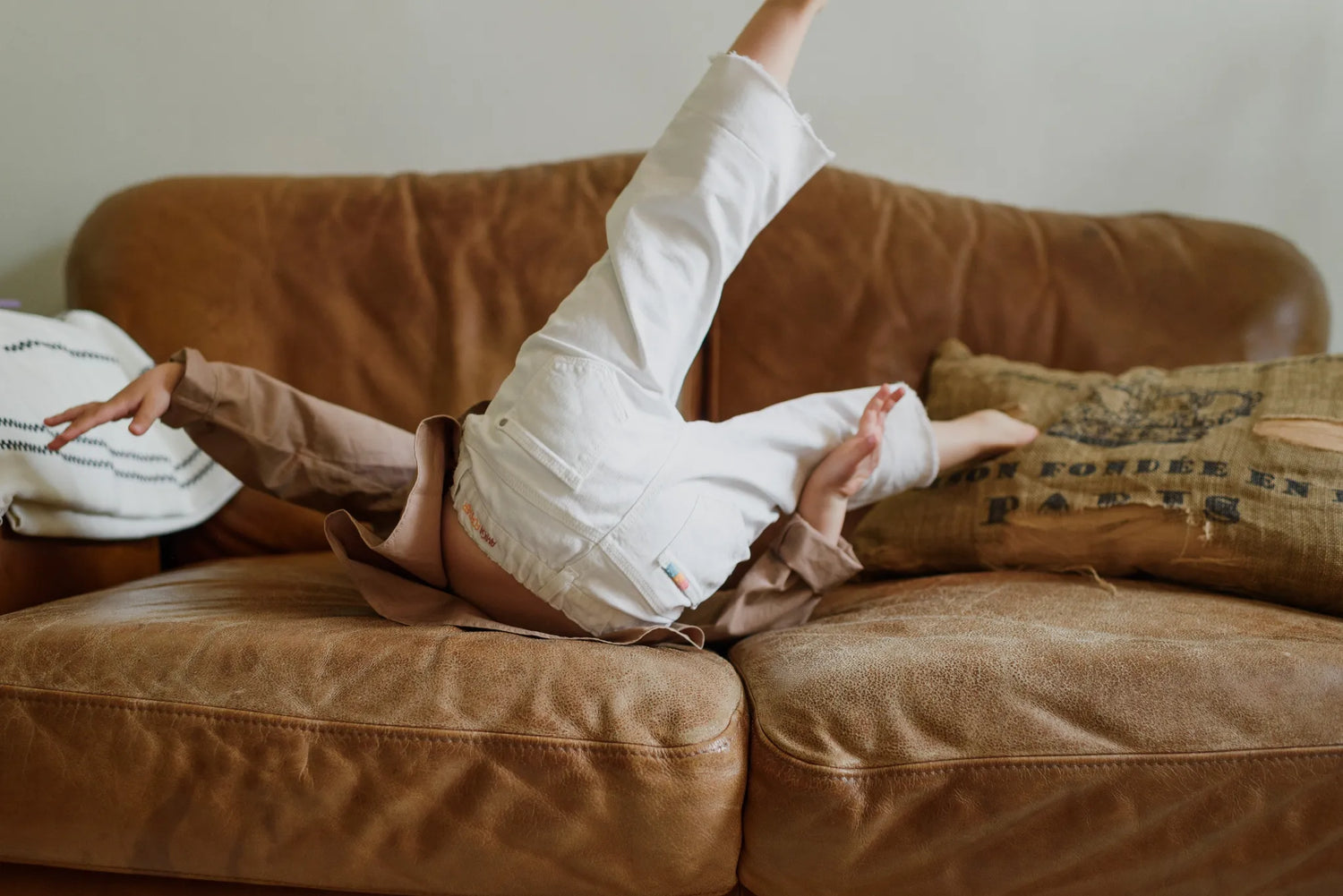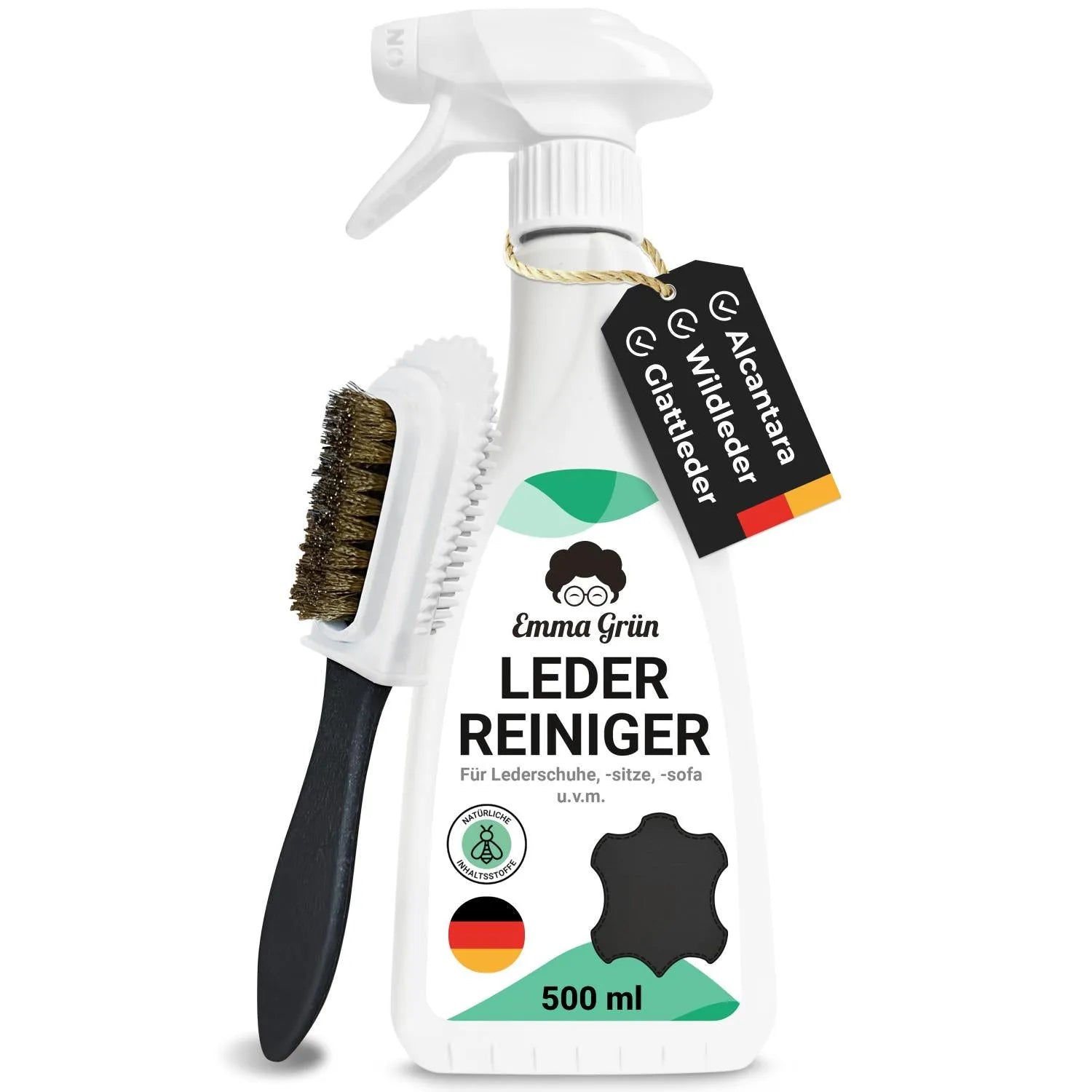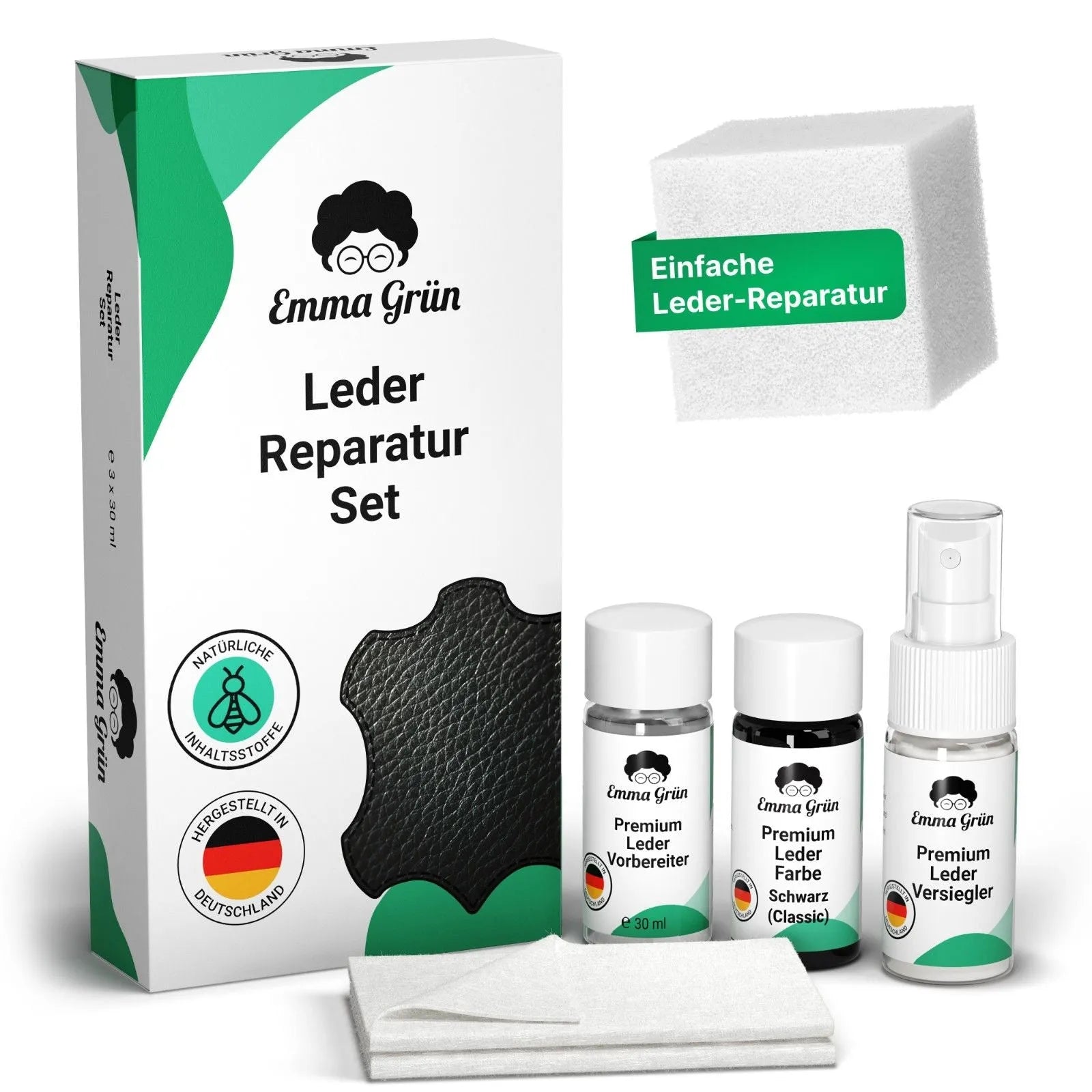Even though artificial leather is extremely durable, various everyday situations leave their mark over the years. This slow deterioration is particularly evident on furnishings such as sofas, chairs or armchairs, which are exposed to external stress on a daily basis, in the form of peeling surfaces and small cracks.
Fortunately, signs of aging of this kind can be delayed with the right leather care and visual blemishes can be eliminated with the help of liquid leather. The following article tells you how you can prevent premature aging of artificial leather and how you can repair small tears and holes with liquid leather.
What is synthetic leather?
Artificial leather, also known as synthetic leather or imitation leather , is an innovative material developed to replicate the aesthetics and feel of real leather without using animal products. Whether in the fashion industry, the automotive sector or in the field of interior design, artificial leather has become a popular leather alternative that addresses both aesthetic and ethical issues . The continuous development of artificial leather technologies is helping to make this innovative alternative more and more compelling and opening up new possibilities for design and sustainability.

Image source: Pixabay
Unlike natural leather , which is made from animal skins, artificial leather is made from a combination of synthetic materials such as polyurethane (PU) or polyvinyl chloride (PVC) . In order to create a texture and appearance that resembles real leather, the different materials are processed using chemical processes. Thanks to modern technology, it is now possible to produce artificial leather that is almost indistinguishable from real leather.
The advantages of artificial leather are not only its animal-friendly production, but also its versatility and durability . Artificial leather can also be produced in different colors, patterns and textures to suit different needs and applications. It is also more resistant to wear and tear, easier to maintain and in many cases more cost-effective than real leather.
Which external influences cause artificial leather to age prematurely?
There are several reasons why faux leather becomes brittle over time. The most common factors are the following:
- Aging and Wear: Like any other material, synthetic leather is subject to the natural process of aging and wear. Over time, the bonds in the polymers that make up synthetic leather can weaken, causing it to become brittle.
- Inadequate care: Artificial leather also needs sufficient care in the form of natural leather care products . If the material is not provided with sufficient moisture in the form of creams, waxes or emulsions, the material dries out, becomes brittle and cracks.
- UV radiation: Long-term exposure to ultraviolet rays from sunlight can lead to the degradation of the plastics in artificial leather . This affects the flexibility and robustness of the material and makes it brittle.
- Chemical influences: The use of cleaning agents that contain chemical ingredients can damage the surface of the artificial leather. Cracks or flaking areas are not uncommon.
- Temperature fluctuations: Temperature fluctuations can also cause artificial leather to age more quickly. Low temperatures make the material stiffer and high temperatures make it soft. In both cases, the material becomes more susceptible to cracking and brittleness .
- Moisture: Although synthetic leather is generally more resistant to moisture than real leather, high humidity levels or constant contact with water can cause the binding agents in synthetic leather to break down and weaken the material.
Emma Grün Tip: When it comes to products for cleaning and caring for artificial and real leather, you should trust in the natural power of sustainable products. This way, you provide your favorite pieces with all the necessary nutrients, protect them from external influences and make a positive contribution to a healthy environment.
What is liquid leather and why is it suitable for repairing worn artificial leather
Liquid leather is an innovative repair product made from special polymers and dyes. It was developed to imitate the structure and appearance of real or artificial leather. With this miracle product, you can repair minor damage such as scratches, cracks or abrasions effectively and inexpensively. You are guaranteed the following benefits:
- Cost-effectiveness: Repairing with liquid leather is much cheaper than buying new furniture or car seats.
- Easy to use: You don't need any special tools or expertise. Most liquid leather repair kits contain everything you need to repair.

- Versatile: From artificial leather to real leather: liquid leather is suitable for a variety of surfaces .
You can buy liquid leather in well-stocked hardware stores, car accessory stores and of course in various online stores. When buying, you should make sure that the product is suitable for the type of leather or imitation leather that you want to repair. The leather repair gel from Emma Grün is suitable for all common types of leather, is easy to spread, is extremely easy to use and guarantees a flexible and visually excellent result.
Repairing porous artificial leather: step-by-step instructions
Liquid leatherette contains a special substance that imitates the texture and appearance of leather and faux leather . Liquid leatherette is a common method that is perfect for repairing superficial scuffs, small tears and cuts on faux or real leather. The following step-by-step guide will show you how to do the repair yourself in a few simple steps.
What you need for the repair:
- Artificial leather repair kit from Emma Grün (contains liquid leather in white, black or neutral and a spatula)
- Alcohol wipes or sustainable leather cleaner
- Fine sandpaper
- Soft cloth
Step 1: Preparation of the damaged area
To ensure that the adhesion of the liquid leather is not impaired, first remove any dirt and grease residue from the damaged area . The best way to do this is with an alcohol wipe or a natural cleaner such as the Premium Leather Cleaner from Emma Grün .
Step 2: Smooth the surface
To ensure better adhesion and a seamless appearance, we recommend that you lightly sand the edges of the damaged area. To do this, use fine sandpaper.
Step 3: Applying the liquid leather
Now open your liquid leather repair kit and apply a thin layer of liquid leather to the damaged area for a natural look. Spread it using the spatula.
Step 4: Let dry
Allow the liquid leather to dry completely. Remember that this process may take several hours .
Step 5: Additional layers
If necessary, apply another thin layer of liquid leather. You can repeat this process until you are satisfied with the result.
Step 6: Finish
Once the liquid leather has dried, you can carefully remove the excess material with a soft cloth and lightly polish the repaired area for a beautiful appearance.
How to keep your faux leather furniture beautiful for longer
Cracks and peeling surfaces in faux leather are a common problem. However, there are several ways you can prevent premature aging . Here are some tips:
- Good quality: Not all faux leather is the same. Some are sturdier and more durable than others. Investing in high-quality faux leather can help reduce the likelihood of cracks and peeling surfaces .
- UV protection: One of the main causes of premature aging and cracking in artificial leather is UV radiation. Avoid direct exposure of your artificial leather furniture to sunlight wherever possible. UV-protective sprays or natural care products that have integrated UV protection will also protect your artificial leather from the effects of sunlight.
- Regular care: Clean the artificial leather regularly but gently. Avoid aggressive cleaning agents or solvents that could attack the surface. Special artificial leather cleaners without aggressive ingredients are always the safest choice.
- Climate control: Extreme temperatures and humidity can damage faux leather. Try to maintain a constant temperature and humidity in the rooms.
- Be careful when using it: Make sure that you keep sharp objects that could cause scratches or cuts away from your faux leather furniture . You should also avoid vigorous rubbing or stretching of the material.
Emma Grün Tip: You should repair small damage immediately. This will prevent it from spreading into larger cracks or flaking areas. Special products such as liquid leather can be helpful here.
Conclusion
Liquid leather is an effective and easy alternative to repair small damages in faux leather. The technique requires a little patience and skill, but with the right tools and some practice, it is possible to achieve good results. As always when tackling a repair project, it is advisable to carefully read all the instructions and safety information provided with the products.
FAQ: Questions & Answers
What is liquid leather?
Liquid leather is a special formula of polymers and dyes designed to mimic the properties of real leather. It is typically used as a filler to repair minor damage to leather and synthetic leather surfaces.
How to apply liquid leather to worn synthetic leather?
Liquid leather is usually applied with a special applicator or a spatula. First, the damaged area is cleaned and prepared before the liquid leather is carefully applied to the damaged area.
How long does it take for the liquid leather to dry?
Drying time may vary depending on the brand and product, but generally it takes several hours to a day. Some people use a hairdryer to speed up the process.
Is the repair with liquid leather permanent?
The durability of the repair will depend on a number of factors, including the quality of the liquid leather and the stress placed on the repaired area, but in general, a well-done repair can be expected to last for a considerable amount of time.
Can any type of damage be repaired with liquid leather?
No, liquid leather is best for small tears, cuts or scratches. For larger damage such as deep tears or holes, other repair methods may be required.
Sources:
1. www.haus.de/leben/kunstleder-reparieren-34902
2. www.hausjournal.net/kunstleder-reparieren
3. Effect of UV irradiation on the mechanical and spectroscopic behavior of PVC”, Journal of Macromolecular Science, Part A: Pure and Applied Chemistry.
4. www.motointegrator.de/blog/fluessigleder-autositze/
5. www.frag-den-heimwerker.com/html/kunstleder-reparieren.php



